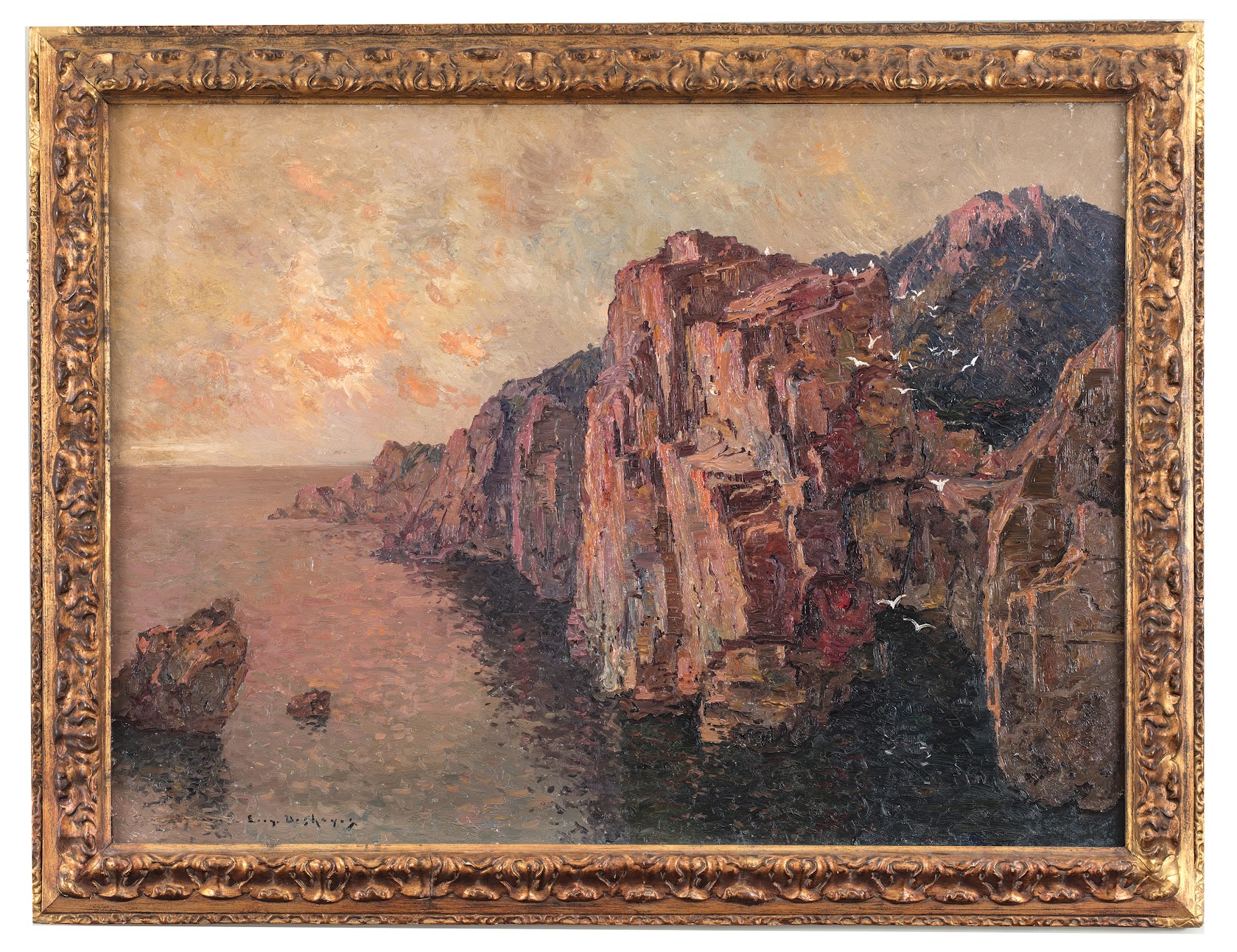Eugène François Adolphe Deshayes (1862 – 1939) was born in Algiers and was a French Orientalist painter recognized for his works inspired by North Africa. A student of Jean-Léon Gérôme, he began exhibiting in Algiers as early as 1890, before traveling through the surrounding regions and more broadly across North Africa.
As a child, often ill, he discovered his passion for drawing with a slate and pencil. At the lycée in Algiers, he excelled in drawing, but his youth was marked by the loss of his parents, leaving him under the guardianship of his brother, a young doctor in Douera. He joined the School of Fine Arts in Algiers, then directed by Émile-Charles Labbé, a landscape painter from the Barbizon school.
In 1882, Deshayes received a scholarship to study at the Beaux-Arts in Paris, where he worked under Gérôme’s guidance and frequented the Louvre to make copies. He shared a room with the Algerian painter Bertrand. His connection to nature was strong, and he painted landscapes of Versailles and Parc Monceau. Deshayes even sold one of his paintings to the art dealer Durand-Ruel.
n 1900, he participated in the World’s Fair by painting one of the decorative panels of the Pavilion of Algeria. Over the years, he received numerous accolades, including the Knight’s Cross of the Legion of Honor in 1935 and a gold medal at the International Exhibition of 1937.
His artistic career is marked by success, exhibitions around the world, and official commissions. In addition to his landscapes and marine scenes, he has a particular interest in the Roman ruins in Tunisia. He has a keen and sensitive eye for light. He seeks balance in masses and forms, as well as harmony and orchestration of colors in his paintings.
In his later years, he faced health issues but continued to work passionately. He died on November 24, 1939, shortly after the outbreak of World War II. On December 1, 1939, the mayor of Algiers, Mr. Rozis, paid tribute to his memory, and in 1941, he proposed renaming a street in his honor, which was unanimously approved. Eugène Deshayes now rests in the small cemetery of Tipaza, leaving behind a valuable artistic legacy.

Sign up to the newsletter and stay informed about our latest acquisitions and exhibitions:
© Galerie Rousset 2023